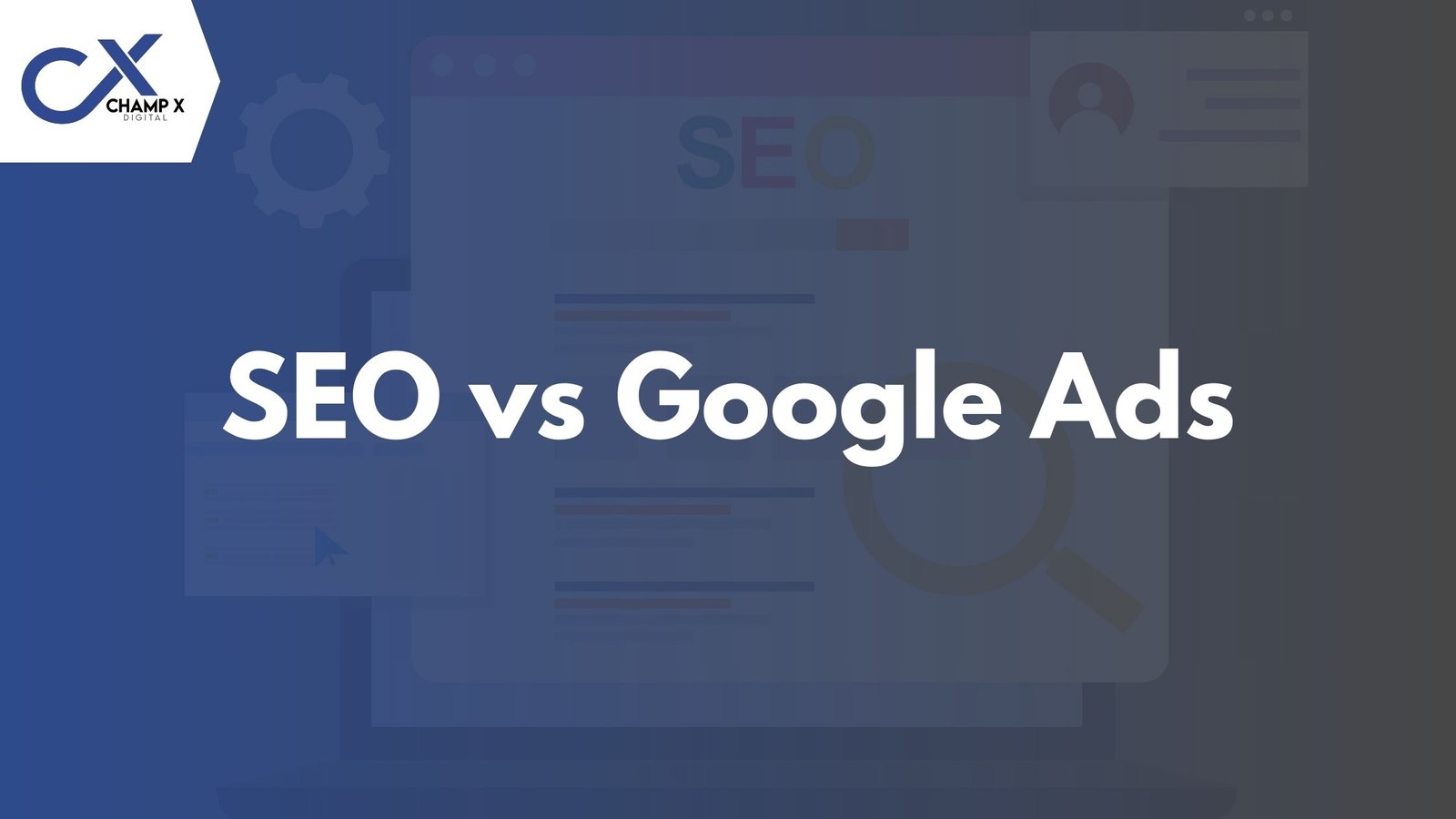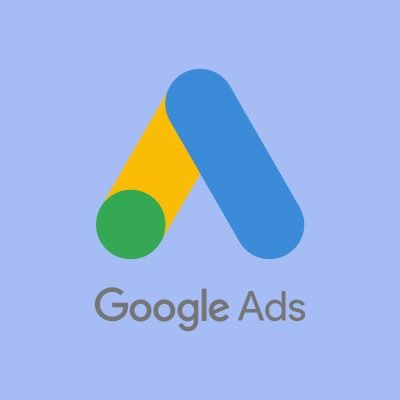SEO vs Google Ads - Which is Better for Your Business

SEO vs Google Ads - Which is Better for Your Business
SEO vs Google Ads - Which is Better for Your Business
Search engine optimization (SEO) and Google Ads are two fundamental aspects of digital marketing. SEO involves optimizing your website to appear higher in organic search results on platforms like Google. This process enhances your site’s visibility for relevant search terms without the immediate cost per click associated with ads. On the other hand, Google Ads operates on a pay-per-click (PPC) model where you pay Google to have your ad campaigns appear alongside relevant search results, commonly known as paid ads.
Thesis statement: SEO is a more effective long-term strategy than Ads
While Google Ads provides immediate visibility and can drive quick sales, SEO offers sustainable growth and credibility that can benefit a business in the long run. Investing leads to organic results more than paid ads, building trust with potential customers.
Organic Traffic vs Paid Traffic
Organic traffic is earned through effective SEO strategies, where your site appears in the search engine results pages (SERPs) due to its relevance and authority. If you’re looking to enhance your organic traffic, investing in professional SEO services can significantly boost your site’s visibility and ranking. Paid traffic, generated through Google Ads campaigns, involves ads appearing on the search results page when users enter specific search terms.

Benefits of organic traffic over paid traffic
Credibility and Trustworthiness: Users tend to trust organic search results more than paid ads, as SEO efforts involve optimizing your website to meet search engines’ standards.
Cost-effectiveness: SEO is cost-effective in the long run; once you rank well, you don’t need to pay per click like Google Ads.
Sustainable results: Ongoing SEO provides consistent traffic over time, unlike Google Ads, which stops delivering traffic once you stop paying.
Long-Term vs Short-Term Search Results
When comparing the impact of SEO and Google Ads on your business, it’s crucial to distinguish between their long-term and short-term effects on search results.
Explanation of long-term benefits of SEO
SEO is renowned for its enduring benefits. It involves a comprehensive strategy that includes optimizing your website’s content, structure, and on-site metadata to align with search engine algorithms. Over time, these efforts lead to a stronger presence in organic search results, making your website more visible to users searching for relevant keywords. The true value of SEO lies in its ability to generate sustained traffic, enhance site authority, and gradually improve your site’s ranking. This ongoing improvement helps sustain your place on the first page of search engine results, offering continuous visibility without ongoing costs for each visitor.
Comparison to short-term results of Ads
In contrast, Google Ads are designed to deliver immediate results. By setting up ad campaigns, you can instantly appear in front of your target audience, regardless of your organic search ranking. This is particularly useful for driving quick sales, promoting limited-time offers, or gaining exposure for a new product launch. However, these benefits last only as long as you continue to fund the campaigns. Once the spending stops, so does the visibility.
Temporary nature of Ads vs. Consistent traffic from SEO
The inherent temporariness of Google Ads is both a strength and a limitation. It allows for flexibility and immediate adjustment to marketing strategies, which is excellent for reactive campaigns or testing new markets. However, this means that businesses relying heavily on ads might find themselves vulnerable to budget fluctuations and could experience significant drops in traffic if ad spending is reduced.
Consistent traffic from SEO
Conversely, SEO offers a more stable and predictable source of traffic. Through continuous SEO, your website can achieve and maintain high rankings that attract consistent traffic. This not only helps in reducing the dependency on paid advertising but also builds a foundation of trust with your audience. High organic rankings are often associated with credibility and authority, crucial for converting visitors into customers.

Google Ads Help with SEO
While SEO and Google Ads are often viewed as distinct strategies, using Google Ads can complement and enhance your SEO. Here’s how integrating these tools can benefit your overall digital marketing strategy.
The synergy between Ads and SEO
Running Google Ads alongside your SEO can provide valuable insights into keyword effectiveness and user behavior. This synergy allows you to test the performance of different keywords through PPC ads and then apply successful terms to your organic SEO strategy. This dual approach can accelerate your understanding of which keywords drive traffic and conversions, helping you optimize your SEO campaigns more effectively.
Leveraging Google Search with Ads
By using Google Ads, you can ensure that your site appears prominently in Google search results through both organic and paid channels. This visibility increases the chances of users visiting your site, and having both SEO and PPC ads active means you can dominate the search engine results pages (SERPs), potentially increasing overall click-through rates.
The Role of AdWords in SEO
Google AdWords (now Google Ads) is a powerful tool for placing your business directly in front of potential customers. Although AdWords itself doesn’t directly influence SEO rankings, the traffic, and user engagement metrics from your ads can provide indirect benefits. For example, increased site visits and engagement might signal to search engines that your website is relevant and valuable, possibly boosting your organic rankings.
Using Display Ads to Boost Brand Awareness
Display ads, a feature within Google Ads, allow you to present visual advertisements on a vast network of websites across the internet. While primarily used for brand awareness rather than direct conversions, the increased visibility can lead to greater brand recall. This heightened awareness can indirectly benefit your SEO as users are more likely to search for your brand directly, boosting organic traffic as well as reinforcing your relevance in related searches.
PPC Ads as a Complementary Strategy
PPC ads can serve as a testing ground for your SEO strategy. By implementing PPC campaigns, you can quickly gather data on which ad copy and keywords resonate best with your target audience. These insights can then be integrated into your SEO content and meta tags, enhancing your organic search strategy.
Brand Building and Authority
SEO significantly contributes to building brand authority. By appearing organically in search results, a business is viewed as more credible and authoritative compared to one that only uses ads.
Importance of building brand authority
Building brand awareness through SEO means your business becomes recognized in relevant search results, enhancing trust among potential customers.
Lack of brand-building potential with Ads
While Google Ads can increase visibility, it doesn’t contribute as effectively to long-term brand building as organic SEO.
User Experience and Engagement - Invest in SEO
How SEO improves user experience on a website
SEO best practices improve the usability and accessibility of your website, leading to a better user experience. A well-designed website not only incorporates effective SEO strategies but also focuses on intuitive navigation, mobile responsiveness, and engaging visual elements. Investing in professional web design services can further enhance these aspects, ensuring that your website not only ranks well but also provides a seamless and attractive user experience. This can result in lower bounce rates and higher engagement, as visitors are more likely to find what they are searching for and stay on your site longer.
Lower bounce rates and higher engagement with SEO
A well-optimized site not only attracts quality traffic but also keeps users engaged with relevant content and a user-friendly layout.
Lack of user engagement with Ads
While ads drive traffic, they might not always lead to engagement if the landing page isn’t optimized for user experience.
Conclusion - Search Engine Optimization
To summarize, SEO and Google Ads have unique advantages; however, SEO stands out as the more cost-effective and credible strategy for long-term business growth.
Encouragement to prioritize SEO for long-term success.
For sustainable results and to build a credible brand, it is wise to invest in SEO. Begin enhancing your digital marketing strategy by focusing on organic SEO to ensure your business thrives in the long term.


